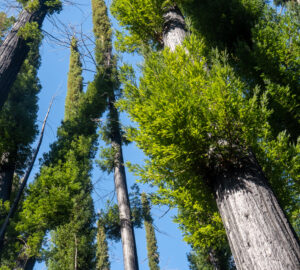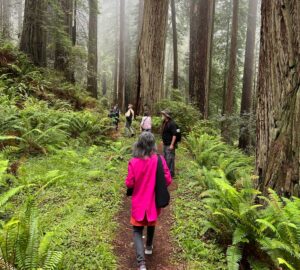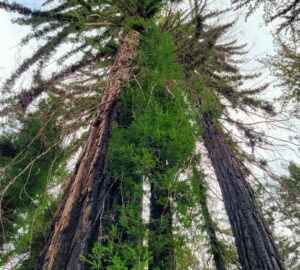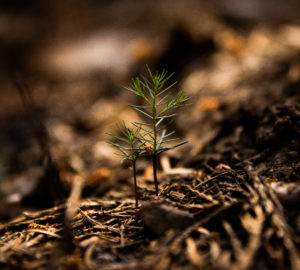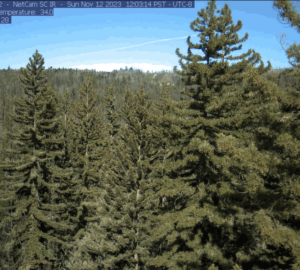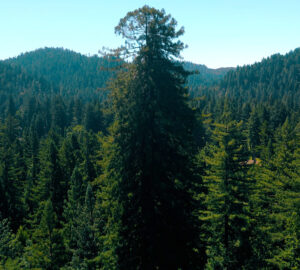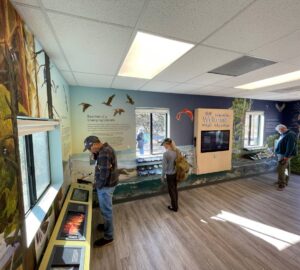The League launches the Redwood Parks Fund to bolster the next generation of redwood parks.
Pillars of smoke rose over Northern California just hours after early Sunday morning lightning strikes on August 16, 2020. Two days later, as fires swirled up throughout the region, the leading edge of the CZU August Lighting Complex Fire in the Santa Cruz Mountains passed over the headquarters area of Big Basin Redwoods State Park, destroying its historic buildings.
The fire at Big Basin Redwoods State Park made headlines around the world, but it was far from the only redwood park to burn. Sadly, each of the parks forced to close by fire had only recently been reopened following the state’s COVID-19 stay-home order.
“This has been a rough year for redwood parks and for the people turning to them in these challenging times,” said Jessica Carter, Director of Parks and Public Engagement at Save the Redwoods League. “Moving forward, as more people across all our communities seek the redwoods for the health benefits and enrichment they uniquely provide, we need to make sure these parks can deliver.”
Today, through our Redwood Parks Fund, Save the Redwoods League is prioritizing fire recovery and resilience, expanding access to redwood parks, and ensuring that the park experience engages diverse visitors looking to the redwoods for recreation and enrichment. The work funded by this campaign will help redefine how the public enjoys redwoods long into the future.
FIRE IN THE PARKS
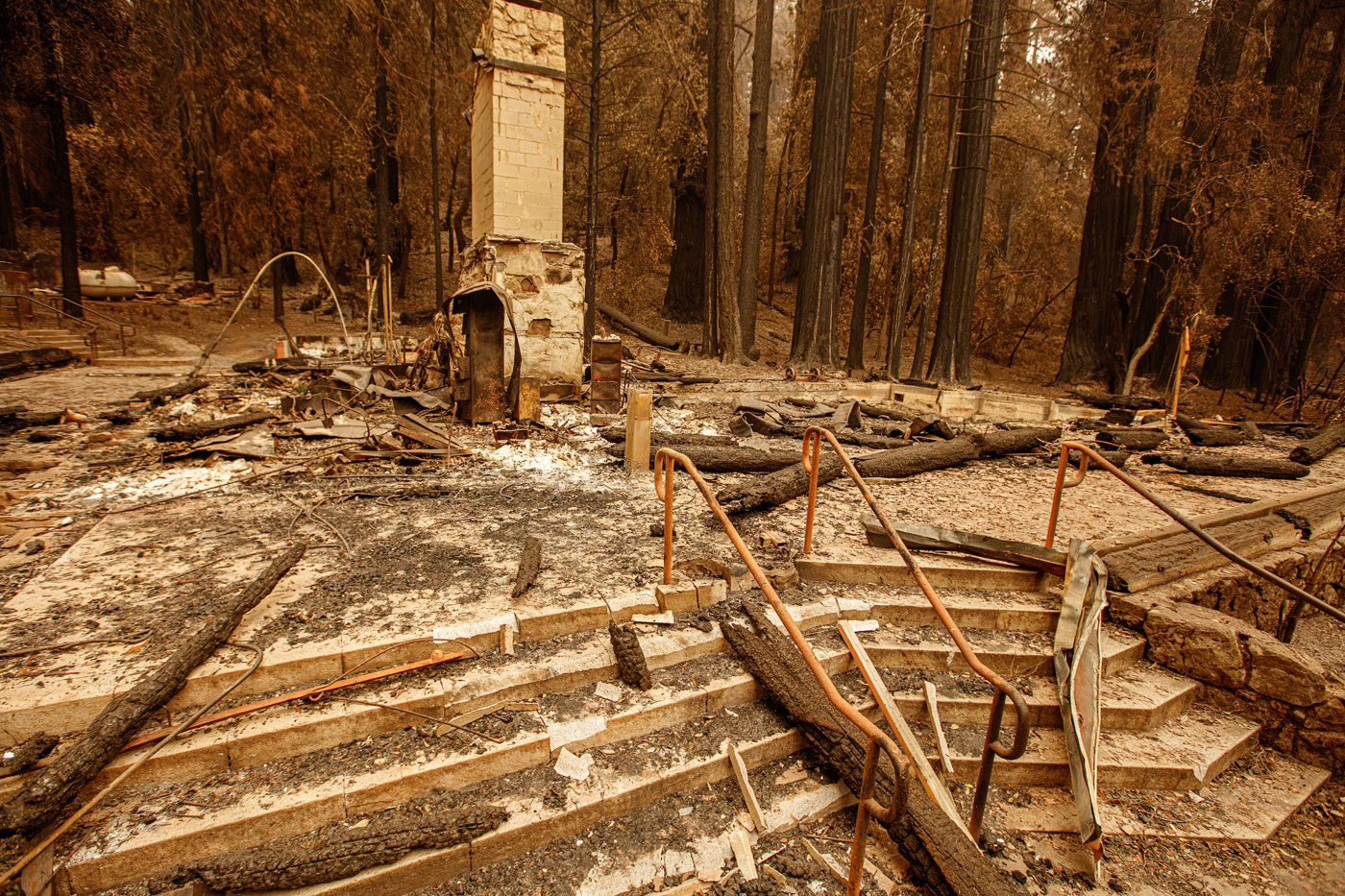
Just days after the news about Big Basin Redwoods State Park, Save the Redwoods League joined Sempervirens Fund in raising funds to meet the park’s immediate needs and to help plan for the rebuilding. While we are confident that most of the ancient redwoods will survive due to their natural resistance to fire, we are still awaiting an assessment of the full impact. The park will require extensive clearing of hazards and debris, as well as repair of the miles of roads and trails that serve park visitors. Temporary buildings for rangers and other visitor amenities also may be necessary.
“Generations of people from around the globe have been introduced to the wonders of redwoods at Big Basin, and that has led to an emotional outpouring of support from the public,” said League President and CEO Sam Hodder. “After the assessment and initial safety work is done, we will have an opportunity to reimagine the visitor experience in this historic park, renewing its legacy as California’s first state park.”
Armando Quintero, the new Director of California State Parks, who toured the damage at Big Basin on his first day on the job, expressed high ambitions for the park’s future.
“With the rebuilding of Big Basin, we have an opportunity to show the world what the parks of the future could look like, ones that address the challenges of today while serving the diverse communities of California,” he said.
Fires will continue to threaten our redwood parks as the forests around them are strained by climate change and 170 years of fire suppression and commercial harvesting. The fires have also impacted Armstrong, Butano, Bothe-Napa, and Julia Pfeiffer Burns State Parks, among others in the Sierra Nevada and on California’s north coast.
The Redwood Parks Fund will address these impacts as a cornerstone of Forever Forest: The Campaign for the Redwoods, supporting the League’s vision to connect all people with the beauty and power of the redwoods through transformational park experiences. Our goal is to raise $1.5 million for the Redwood Parks Fund by December 31, 2020.
ENHANCING VITAL DESTINATIONS
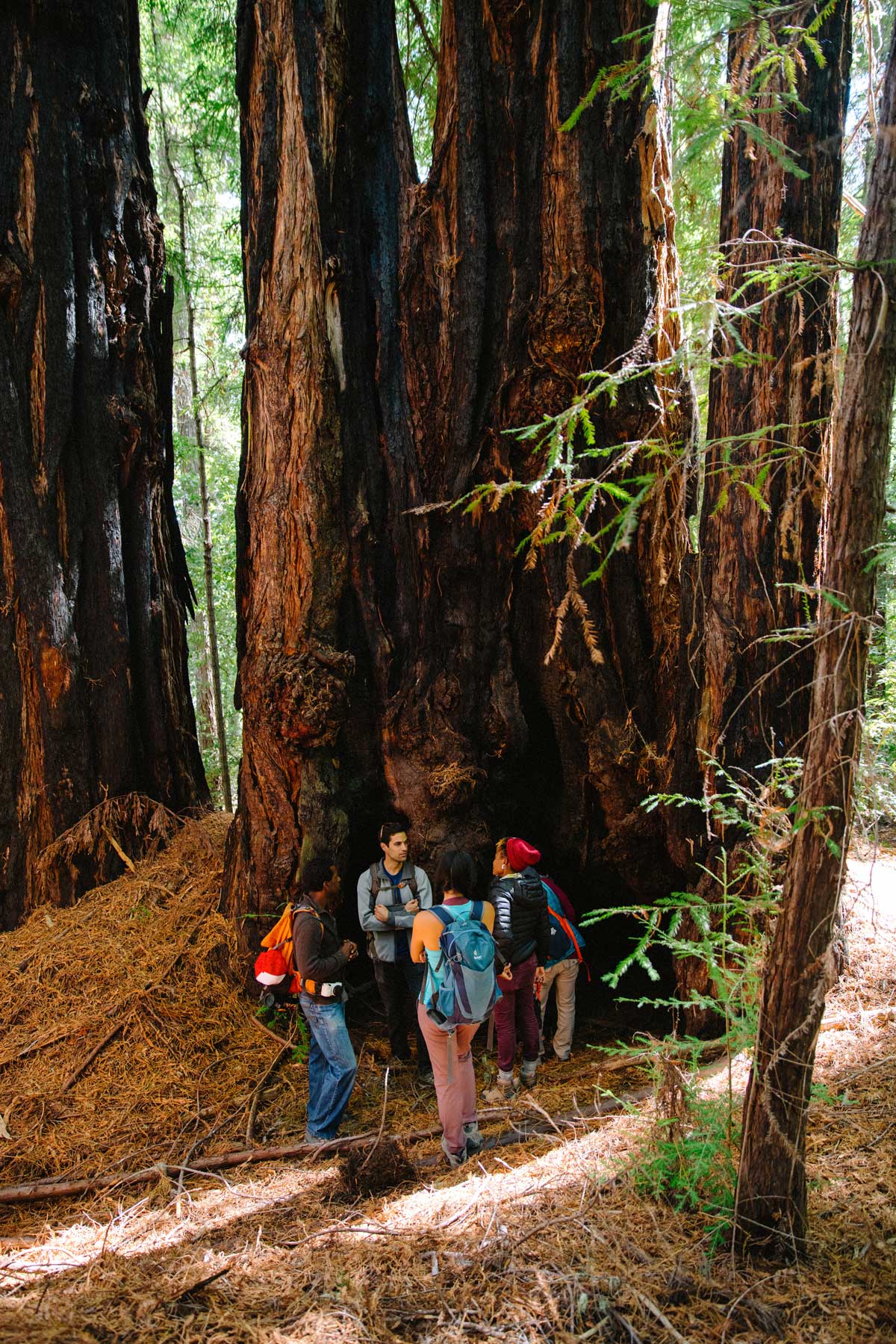
From its beginning, the League has partnered with California State Parks, the National Park Service, and local parks to protect redwoods and share them with an enthusiastic public. Now, the League plans to go even further with projects that either improve current parks or lay the groundwork for new redwoods experiences.
One such project is at the southern end of Redwood National and State Parks, a UNESCO World Heritage Site that attracts 1.4 million people annually to see the giant coast redwoods. Here on the former Orick Mill site at the confluence of the Prairie Creek Scenic Corridor and Redwood Creek, the League is restoring Prairie Creek. We are pulling up acres of asphalt for upland habitat restoration, as well as adding to the California Coastal Trail and connecting it to the park’s trail system through the ancient forest. Parking and a trailhead facility will provide centralized access to many of the area’s famous trails and groves, and a front row seat to the return of elk, salmon, and riparian habitat.
“This is a gateway to an extraordinary world, a place for millions to begin a lifelong connection to the beauty and power of nature,” said Hodder. “The trail to the tallest trees in the world begins here, and the story of thousands of years of Indigenous stewardship is told here. This site, where we’re restoring the natural balance of this landscape, has the potential to be a top priority on the bucket list of every Californian.“
Speaking of gateways, before the fires at Big Basin Redwoods State Park, the League had already struck a partnership to turn its outdated Rancho del Oso ranger station at the park’s western gate on California Route 1 into a new welcome center with an outdoor classroom deck. Here, where the redwood forest meets the sea, the future of this park will emerge with a crucial venue just a short drive from the heart of the San Francisco Bay region.
NEW REDWOODS EXPERIENCES
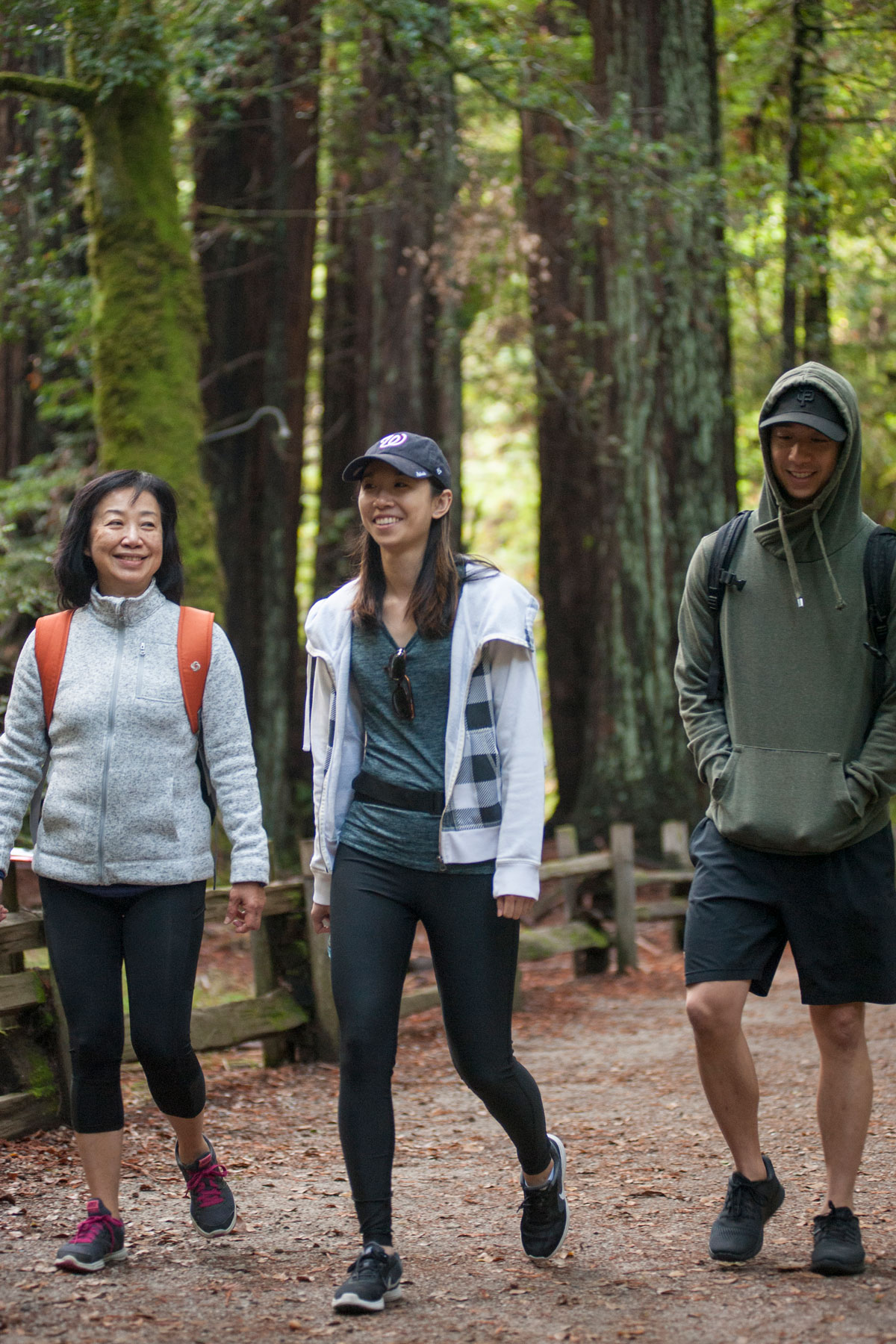
Following purchase of Alder Creek last year, the League has been moving quickly to share this awe-inspiring grove of giant sequoia that has long been hidden to the public. The Castle Fire passed through the property in September 2020, causing substantial damage to neighboring homes, but leaving most of the giant sequoia alive and well. There will likely be substantial restoration needed in the wake of the fire, but the League is nonetheless committed to building trails, programming, and other visitor amenities to enable adventurers to walk among the wildflowers and hundreds of ancient sequoia—including the fifth-largest tree in the world. This new park experience will provide a much-needed sequoia destination in the southern section of Giant Sequoia National Monument, a substantial landscape of public lands with precious little public access resources just a short drive from the diverse communities of Bakersfield and Fresno, and just three hours from the greater Los Angeles area.
“Protecting Alder Creek was perhaps the most substantial sequoia conservation achievement in over 70 years, and the next phase is adding this extraordinary jewel to the crown of sequoia destinations in the southern Sierra Nevada,” said Hodder.
In Sonoma County, Save the Redwoods League is moving to open another unique redwood park to the public. Nestled in the inland hills of Kashia Pomo homelands, Harold Richardson Redwoods Reserve will be the first new old-growth redwood park in a generation. Features will include trails through old-growth redwoods, a day-use area with parking and restroom facilities, and state-of-the-art interpretation to enhance visitors’ understanding of this ecosystem and the peoples who have lived here for millennia.
“As part of our effort to ensure that everyone feels welcome in our redwood parks, we’re working with local stakeholders, the Kashia Band of Pomo Indians, and underrepresented communities in the public access planning,” said Carter.
CREATING OPPORTUNITIES
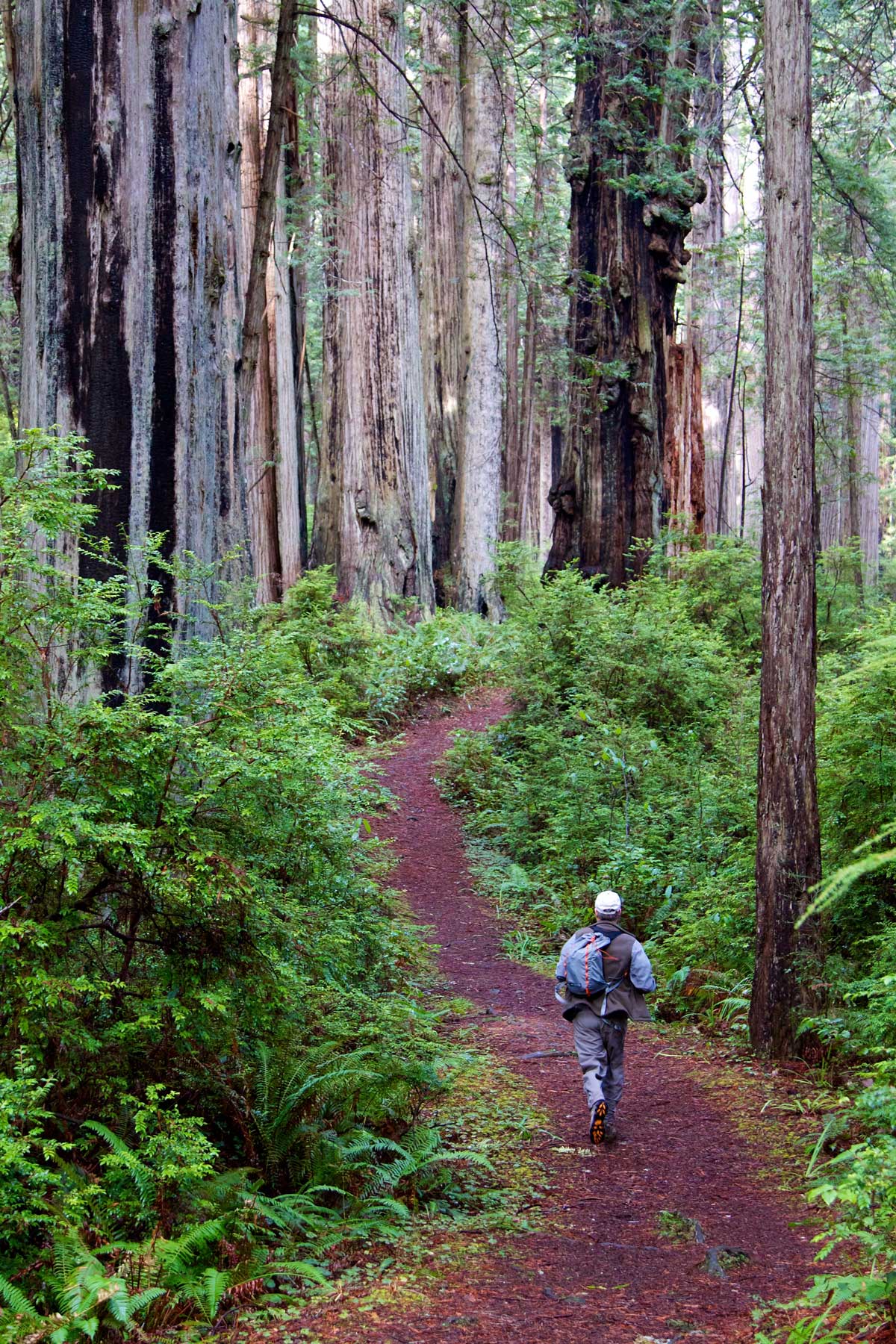
“The greatest barrier to accessing redwoods is the same as it is for most other public lands and open spaces,” said André Sanchez, an outings leader with Latino Outdoors’ Fresno Region. “These obstacles are resources required to access the area (time, money, transportation) and the level of feeling welcome in remote and distant places.”
Thousands of children from low-income communities have already experienced redwood parks through League education grants. This year, the League expanded its program to fund other community projects that help children and youth overcome barriers in reaching the redwoods.
The need couldn’t be clearer. About two-thirds of the fourth-grade students participating in the League’s program serving low-income Oakland youth had never been to a redwood forest even though they literally live adjacent to one.
The League has identified for active engagement specific focus communities that are underrepresented in redwood parks: California Native communities and tribes, low-income rural communities, youth and young adults of color, and young women and girls.
“Not only do we need to design redwood parks to be inclusive and welcoming places, but we also need to break down the barriers that prevent some Californians from ever visiting them,” said Carter.
Redwood parks are much needed reminders of the great beauty that exists in the world. As people increasingly turn to parks with outdated infrastructure—or find them closed due to wildfires—Save the Redwoods League is creating a better future for these treasured places.
Connecting All People with the Beauty and Power of Nature
For more than a hundred years, Save the Redwoods League has been dedicated to connecting people with the redwoods. Today, through our Redwood Parks Fund, Save the Redwoods League is prioritizing fire recovery and resilience, expanding access to redwood parks, and ensuring a transformative, uplifting, and educational visitor experience in the redwoods.
The Redwood Parks Fund is a cornerstone of Forever Forest: The Campaign for the Redwoods, supporting the League’s vision to connect all people with the beauty and power of the redwoods through transformational park experiences. Assuring our redwood parks are ready for all who seek refuge in nature has never been more important than in this era of physical distancing and climate change. In response, Save the Redwoods League has set a goal to raise $1.5 million for the Redwood Parks Fund by December 31, 2020.
This feature appears in the beautiful printed edition of Redwoods magazine, a showcase of redwoods conservation stories by leading scientists and writers, as well as breathtaking photos, answers to readers’ questions, and how you can help the forest.
Join our thousands of members today for only $25, and you’ll get future editions of our Redwoods magazine.

